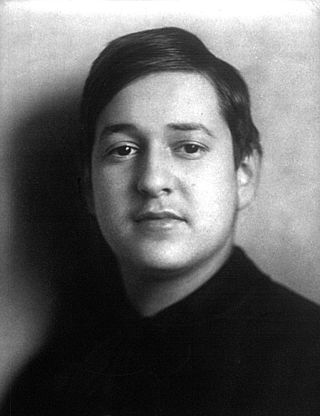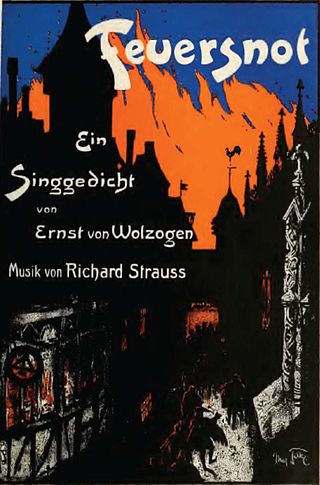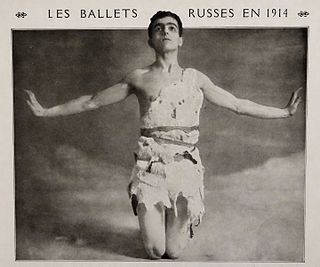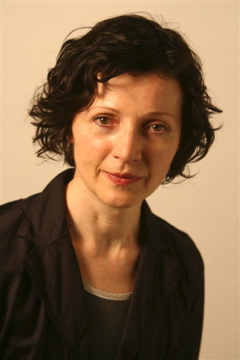
Schlagobers ( Whipped Cream ), Op. 70, is a ballet in two acts with a libretto and score by Richard Strauss. Composed in 1921–22, it was given its première at the Vienna State Opera on 9 May 1924. [1]

Schlagobers ( Whipped Cream ), Op. 70, is a ballet in two acts with a libretto and score by Richard Strauss. Composed in 1921–22, it was given its première at the Vienna State Opera on 9 May 1924. [1]
While serving as co-director of the Vienna State Opera with Franz Schalk from 1919 until 1924, Strauss sought to revive the fortunes of the resident ballet company, struggling after the collapse of the Austro-Hungarian monarchy. He recruited choreographer Heinrich Kröller (1880–1930) from the Berlin State Opera and collaborated with him on a series of productions, restaging his earlier work for the Ballets Russes Josephslegende (1922), and rearranging the music of Schumann, François Couperin, Beethoven, and Gluck for, respectively, Karneval (1922), Ballettsoirée (1923), Die Ruinen von Athen (1924), and Don Juan (1924). Most ambitious was Schlagobers, premiered during the official celebrations for the composer's sixtieth birthday. [2]
A group of children celebrate their confirmation in a Konditorei (a Viennese cake shop), where many of the confections come alive, with marzipan marches and chocolate dances. Having overindulged, one boy falls ill and hallucinates, leading to the party of Princess Pralinée, a trio of amorous liqueurs, and a riot of cakes pacified by beer. [3]
The scenario is somewhat reminiscent of The Nutcracker , which remained unperformed in the West until 1929. [4]
Strauss' score employs a thematic-developmental treatment of motifs and was, according to contemporary critic Julius Korngold, "too elaborately artistic, too massive and heavily developed, and not dancerly enough... The light whipped cream is whisked in a gaudy bowl." [5] [6]
Kröller's choreography may be partially reconstructed from surviving drawings and dance notation, while sketches of many of the 287 costumes and sets created by the house designers have survived. [7] The extravagance of the production, costing some four billion Kronen – a contemporary new staging of Wagner's Rienzi cost by contrast only two hundred million – led to it being dubbed the Milliardenballett or "billionaire's ballet", and at a time of food-shortages and hyperinflation, may in part explain its troubled reception. [8] Strauss observed, in response to the poor reviews, "I cannot bear the tragedy of the present time. I want to create joy." [9]
While in the final version the three amorous liquors are Marianne Chartreuse, Ladislaw Slivovitz, and Boris Wutki, representatives of France, Poland and Russia, the original intent was to have the German Michel Schnapps instead winning Marianne's hand, a symbol of political reconciliation or even resurgent German virility, written out after the Occupation of the Ruhr. Also in earlier sketches, red banners were waved amidst the riotous proletarian cakes, with the Revolution Polka conducted by matzos. [10] [11]
There is a recording of the full ballet by the Tokyo Metropolitan Symphony Orchestra, conducted by Hiroshi Wakasugi. [12]
The composer also recorded the waltzes from the ballet with the Vienna Philharmonic.
The American Ballet Theatre mounted their first production of the ballet in 2017 at the Metropolitan Opera in New York City; Alexei Ratmansky provided the choreography and Mark Ryden designed set and costumes. [13] That production was also shown at the Kennedy Center in Washington, DC, [14] and at the Hong Kong Arts Festival. [15]

Richard Georg Strauss was a German composer and conductor best known for his tone poems and operas. Considered a leading composer of the late Romantic and early modern eras, he has been described as a successor of Richard Wagner and Franz Liszt. Along with Gustav Mahler, he represents the late flowering of German Romanticism, in which pioneering subtleties of orchestration are combined with an advanced harmonic style.

Johann Baptist Strauss II, also known as Johann Strauss Jr., the Younger or the Son, was an Austrian composer of light music, particularly dance music and operettas as well as a violinist. He composed over 500 waltzes, polkas, quadrilles, and other types of dance music, as well as several operettas and a ballet. In his lifetime, he was known as "The Waltz King", and was largely responsible for the popularity of the waltz in the 19th century. Some of Johann Strauss's most famous works include "The Blue Danube", "Kaiser-Walzer", "Tales from the Vienna Woods", "Frühlingsstimmen", and the "Tritsch-Tratsch-Polka". Among his operettas, Die Fledermaus and Der Zigeunerbaron are the best known.

The Vienna State Opera is a historic opera house and opera company based in Vienna, Austria. The 1,709-seat Renaissance Revival venue was the first major building on the Vienna Ring Road. It was built from 1861 to 1869 following plans by August Sicard von Sicardsburg and Eduard van der Nüll, and designs by Josef Hlávka. The opera house was inaugurated as the "Vienna Court Opera" in the presence of Emperor Franz Joseph I and Empress Elisabeth of Austria. It became known by its current name after the establishment of the First Austrian Republic in 1921. The Vienna State Opera is the successor of the old Vienna Court Opera. The new site was chosen and the construction paid by Emperor Franz Joseph in 1861.

Erich Wolfgang Korngold was an Austrian composer and conductor, who fled Europe in the mid-1930s and later adopted US nationality. A child prodigy, he became one of the most important and influential composers in Hollywood history. He was a noted pianist and composer of classical music, along with music for Hollywood films, and the first composer of international stature to write Hollywood scores.

The Merry Widow is an operetta by the Austro-Hungarian composer Franz Lehár. The librettists, Viktor Léon and Leo Stein, based the story – concerning a rich widow, and her countrymen's attempt to keep her money in the principality by finding her the right husband – on an 1861 comedy play, L'attaché d'ambassade by Henri Meilhac.

Joseph Lanner was an Austrian dance music composer and dance orchestra conductor. He is best remembered as one of the earliest Viennese composers to reform the waltz from a simple peasant dance to something that even the highest society could enjoy, either as an accompaniment to the dance, or for the music's own sake. He was just as famous as his friend and musical rival Johann Strauss I, who was better known outside of Austria in their day because of his concert tours abroad, in particular, to France and England.

Ariadne auf Naxos, Op. 60, is a 1912 opera by Richard Strauss with a German libretto by Hugo von Hofmannsthal. The opera's unusual combination of elements of low commedia dell'arte with those of high opera seria points up one of the work's principal themes: the competition between high and low art for the public's attention.
Aschenbrödel (Cinderella) is a ballet written by Johann Strauss II. He had written all the principal parts of the ballet, and was intending to fill in the orchestration as time permitted. However, Strauss died in 1899, and it was finished by composer Josef Bayer in 1900.

Christian Thielemann is a German conductor. He is currently Generalmusikdirektor of the Berlin State Opera and chief conductor of the Staatskapelle Berlin.

Feuersnot, Op. 50, is a Singgedicht or opera in one act by Richard Strauss. The German libretto was written by Ernst von Wolzogen, based on J. Ketel's report "Das erloschene Feuer zu Audenaerde". It was Strauss' second opera.

Ottilie Ethel Leopoldine Herbert, Countess of Carnarvon, known professionally as Tilly Losch, was an Austrian dancer, choreographer, actress, and painter who lived and worked for most of her life in the United States and United Kingdom.

Grete Wiesenthal was an Austrian dancer, actor, choreographer, and dance teacher. She transformed the Viennese Waltz from a staple of the ballroom into a wildly ecstatic dance. She was trained at the Vienna Court Opera, but left to develop her own more expressive approach, creating ballets to music by Franz Schreker, Clemens von Franckenstein, and Franz Salmhofer, as well as dancing in her own style to the waltzes of Johann Strauss II. She is considered a leading figure in modern dance in Austria.

Ludwig Minkus, also known as Léon Fyodorovich Minkus, was an Austrian composer of ballet music, a violinist and teacher of music.
The ballet Sweeney Todd, Op. 68 by Malcolm Arnold was completed in 1959. It is a one-act ballet based on the legend of Sweeney Todd, a villain in The String of Pearls serial. The scenario and original choreography were by John Cranko and the scenery and costumes by Alix Stone in the style of Victorian toy theatres. It was first performed by the Royal Ballet touring company on 10 December 1959, at the Shakespeare Memorial Theatre, Stratford-upon-Avon, with the Royal Opera House Orchestra conducted by John Lanchbery. The dancers who created the roles in the first production were Donald Britton, Johaar Mosaval (Tobias), Elizabeth Anderton (Johanna), Desmond Doyle, Ian Hamilton.
Vienna Waltzes is a ballet choreographed by George Balanchine to music by Johann Strauss II, Franz Lehár and Richard Strauss, made as a tribute to Austria. It premiered on June 23, 1977 at the New York State Theater, performed by the New York City Ballet, and was an immediate success among the public.

Josephslegende, Op. 63, is a ballet in one act for the Ballets Russes based on the story of Joseph and Potiphar's wife, with a libretto by Hugo von Hofmannsthal and Harry von Kessler and music by Richard Strauss. Composed in 1912–14, it premiered at the Paris Opera on 14 May 1914.

The orchestral Dance Suite from Keyboard Pieces by François Couperin, TrV 245 was composed by Richard Strauss in 1923 and consists of eight movements, each one based on a selection of pieces from François Couperin's Pièces de Clavecin written for the solo harpsichord over the period 1713 to 1730. It is also sometimes referred to as simply The Couperin Suite.

The Divertimento for Chamber Orchestra after Keyboard Pieces by Couperin, Op. 86 is an orchestral suite composed by Richard Strauss published in 1942 which consists of eight movements, each one based on a selection of pieces from François Couperin's Pièces de Clavecin written for the solo harpsichord over the period 1713 to 1730.
Whipped Cream can refer to:

Andrea Amort is an Austrian dance critic, dance historian, playwright, festival and exhibition curator as well as a non-fiction writer.